When I first came to work for the Gypsum Association in the mid-1990s, the green building movement was in its infancy. The U. S. Green Building Council was only three years old and the first Leadership in Energy and Environmental Design rating system was still in the works.
On my return to the Association one year ago this month, I was happy to see that our member companies had more than kept pace with the times. A Life Cycle Assessment for gypsum wallboards was already complete and Product Category Rules were in the works. Having earned my own LEED Green Associate credential, I was happy to see the PCR to completion, knowing that LEED v4 would place a high value on product transparency and cradle-to-gate environmental impacts.
Preserving our Natural Resources
In fact, our members, the North America manufacturers of gypsum panel products, have been at the forefront of natural resources preservation, recycling, waste management and responsible land use. For example, members of the Gypsum Association have been recycling paper for over half a century. Last year alone, our industry used more than 40 million cubic yards of paper material destined for landfills—enough to fill more than 10,000 standard railroad cars.
Similarly, synthetic gypsum, which transforms a so-called “waste product” of coal fired power plants into a resource, namely flue gas desulfurization gypsum, is in many ways a poster child for the cradle-to-cradle model of sustainability championed by William McDonough in his book of the same name, coauthored with German chemist Michael Braungart.
In “Cradle to Cradle: Remaking the Way We Make Things,” Braungart and McDonough envision a future in which industry would generate products that—after initial use—would serve as ingredients for other products or could be safely returned to the earth. In a 2004 article, “The Guardian Reborn,” Braungart and McDonough noted that the regulations that successfully curbed acid rain also created opportunities to use recovered sulphur emissions to make gypsum.
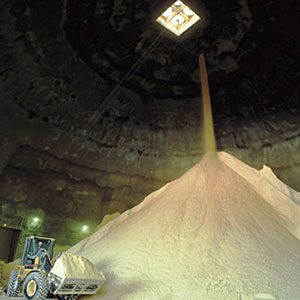
Chemically identical to mined gypsum, flue gas desulfurization gypsum, is an alternative to mineral extraction, and ecological impacts associated with mining. Especially in regions where vast deposits of natural gypsum are not readily available, it just makes sense to manufacture wallboard from synthetic gypsum. In the case of both natural and synthetic gypsum, plants are often located close to the source, cutting down on the cost and environmental impacts of transport and shipping.
Get a Little Greener
Gypsum Association member companies are innovative and eager to evolve more sustainable ways of building. They are also among the first manufacturers to invest in the latest life cycle assessment tools and technologies. As readers of this magazine probably know by now, life cycle assessment is the science of environmental foot printing—putting real numbers on sustainability performance. LCA reports on impact measures such as global warming potential, embodied energy and potential to create smog over the entire lifetime of a product.
Given that they produce one of the most widely used building materials, Gypsum Association members must be active participants in LCA. We have been using LCA to benchmark environmental performance of our products so we can minimize the environmental impact. Life-Cycle Assessment Gypsum Wallboard conforms to ISO 14040 series standards. Released in 2013, the LCA anticipated the inclusion of Life-Cycle Assessment in LEED v4, as a means of encouraging and incentivizing the development of LCA tools by manufacturers and the use of LCA-based decision making by consumers.
Option 4 of the LEED v4 NBD+C credit, “Building life-cycle impact reduction” makes three points available to teams who use LCA to minimize the embodied environmental footprint of new construction projects. To earn the credit, project teams conduct a life-cycle assessment of a building project’s structure and enclosure. The goal: To demonstrate a minimum of 10 percent reduction, when compared with a baseline building, in at least three of six USGBC impact categories, one of which must be global warming potential.
To make earning the credit easier, our LCA is listed in the ATHENA Impact Estimator for Buildings, a software tool designed to evaluate whole buildings and assemblies based on internationally recognized LCA methodology.
All in Good Time
Our most recent green building tool, a third-party certified (Type III) environmental product declaration for 5/8-inch Type X gypsum wallboard was released in May. This cradle-to-gate EPD will contribute to earning the LEED v4 new credit for EPDs. That credit can be calculated in a variety of ways, reflecting LEED v4’s emphasis on flexibility, for a maximum achievement of two points. The Gypsum Association’s EPD is ISO14025 and 21930 compliant, includes external verification and is valued as one half of a product for purposes of credit achievement calculation.
It is undeniable that interconnected processes of developing LCAs, PCRs and EPDs require an investment of both time and money on the part of industry. As manufacturers across the building materials industry rush to respond to LEED v4 requirements in this arena, the number of possible points may seem paltry in comparison with their efforts and expenditures. However, it is important to take the kind of big picture view that the USGBC itself has attempted with the release of LEED v4.
With LEED v4, USGBC has made a significant attempt to build on its prior success by raising the bar for the design and construction industry. “Aspirational” is the term they are using to describe LEED v4’s system of credit development and weighting. The aim is to incentivize project teams to do “more good” rather than focus on creating buildings that are merely “less bad” in terms of energy and environmental impacts. Gypsum wallboard has done as much as any other building product to increase efficiency and safety of construction over the last 100 years, and our member companies are equally committed to helping A/E/C project teams promote a better environment, indoors and out.
Speaking of teams, USGBC is also encouraging a more integrative approach to the design and construction of a LEED certified building. Both manufacturers and contractors may be asked to weigh in on wall system components more often and earlier—even prior to schematic design. Not surprisingly, the focus seems to be more on the design team rather than the construction team. Nonetheless, I’m sure you would agree that any effort to promote communication and collaboration across the A/E/C community is both positive and aspirational. As always, the Gypsum Association is here to help.
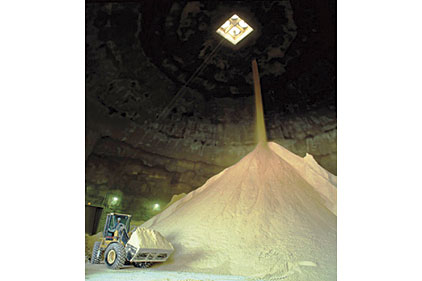

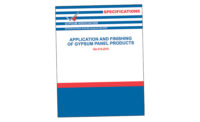
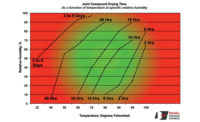
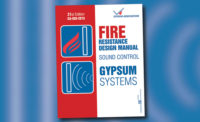
Report Abusive Comment